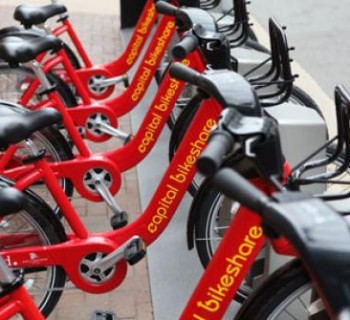DETROIT— The United States has the largest prisoner population in the world with more than 2.5 million inmates in its system. The next highest prison population in the world is in China, with four times the population, and only 1.6 million inmates by comparison.
While the U.S. has a staggering number of citizens locked up, Michigan is taking strides to curb its inmate population through the state’s prisoner re-entry program.
The Community Foundation for Southeast Michigan’s Sept. 19 conference, Effective Practices in Facilitation Prisoner Re-Entry, was the final seminar in the Foundation’s Learning Series, which sought to increase awareness, understanding and networking among organizations facilitating prisoner re-entry in southeast Michigan.
The program was a result of the Detroit Safe Community Collaborative, an initiative that grew out of a Hudson Webber Foundation grant to CFSEM to implement a program dedicated to improving re-entry services for prisoners.
This conference focused on methods that stem a prisoner’s likelihood of being recommitted to the prison system. Prisoner education and training within the Michigan Department of Corrections were among the most discussed topics.
The 176 conference attendees listened to speakers from the MDOC, the U.S. Justice Department, the Detroit Police Department and the HWF. After the speakers presented, attendees split into groups for breakout sessions, which featured case studies and lectures about the importance of collaborations within law enforcement and corrections.
The median rate of incarceration worldwide is 125 per 100,000 people, about one-sixth of the U.S.’s rate. The next highest prison population in the world is China, with four times the U.S.’s population, and has 1.6 million inmates.
The attendees, many of whom are employed by MDOC, were able to address speakers during question-and-answer sessions about Michigan’s creative techniques in reducing the prisoner population.
So, while reform on the aforementioned hot topics is at a standstill during this election season, there are organizations and people committed to reducing the prison population by using innovative methods and programs.
Getting the numbers in check
Re-entry is an important topic because Detroit, and other Michigan cities including Flint, Saginaw and Pontiac, are at odds while trying to reduce crime and need smart initiatives to help lower crime and recidivism.
In Detroit’s effort to rebrand itself as an innovative city and attract a young, educated workforce, public safety and the way people perceive the city is and will continue to be a huge challenge for all in the future.
“Our perception is far worse than our safety record and we’ve perpetuated it over and over again,” said David Egner, president and CEO of the HWF and one of the event’s keynote speakers. “There are more assets and capabilities here to move this economy and city forward.”
Part of this progressive effort is the MDOC’s Michigan Prisoner Re-Entry Initiative. Introduced in 2005, this program has helped the state reduce its inmate population by nearly 7,500 inmates in under a decade, bringing the total to around 44,000.
Governing officials from city to federal levels have lauded the MPRI as a model for other states to follow.
Amy Solomon, senior advisor to the assistant U.S. attorney general, and another keynote speaker at the event, said recidivism and incarceration rates in the U.S. are high, but Michigan is a leading state in the effort to reduce re-incarceration.
“Compared to the rest of the country, Michigan has shown substantial progress,” she said. The state has successfully reduced the prison population by 12 percent in the last decade in part by revising sentencing requirements for drug offenders in the late 1990s, specifically the “650 Lifer Law,” and by introducing the MPRI.
She said incarceration costs the United States $74 billion a year, which surpasses the country’s 2012-2013 education budget by $6 billion and that it’s a systemic problem. “The societal and financial costs are high. … This is bigger than a corrections problem or a criminal justice problem.”
Detroit Police Chief Ralph Godbee also spoke at the event and said it costs the city an estimated $5 million per homicide, which takes into account the whole process from arrest to prosecution to the period of incarceration.
If Godbee’s numbers are accurate, homicides in Detroit, now at 263 for 2012 and counting, have and will continue to cost the city more than $1.3 billion this year. That’s a massive sum, almost half of the city’s 2012-2013 operating budget.
The MDOC says it costs a lot less to invest in re-entry programs than to re-incarcerate repeat offenders.
Solomon said incarceration costs the United States $74 billion a year, which surpasses the country’s 2012-2013 education budget by $6 billion and that it’s a systemic problem. “The societal and financial costs are high. … This is bigger than a corrections problem or a criminal justice problem.”
The progress Michigan is having is significant because the state operates the seventh largest prison system in the U.S. and is one of four states that spends more on corrections than on education. Michigan incarcerates 430 out of every 100,000 people.
Solomon said, however, she’s optimistic about re-entry and education initiatives and that most people support these programs because curbing crime and keeping people out of prison is not a partisan issue.
“Incarceration rates are on the decline nationally,” Solomon said. “They’re at their lowest level in four decades. I’m optimistic we can make a difference to extend that second chance.”
We can’t rewrite national laws easily, but we can do a better job to retrain and educate our inmates
While the U.S. is far from total reform of current laws and corrections policy, nationally, we have begun to focus much more on education, training and re-entry programs for inmates.
Through customizable programs, said MDOC Director Daniel Heyns, Michigan can cut back their $2 billion-a-year corrections budget, which accounts for one-fifth of Michigan’s yearly operating budget.
“We have to contain costs and the way we do that is through smart justice,” he said. ”We’re going to make MDOC more efficient in a smart and humane way. … We have to be thoughtful about [the inmates] problems.”
Heyns agreed that the way to be smart about re-entry programs is to forge more collaborations and partnerships. He said entities like law enforcement and corrections need to work together to make ease inmates’ transitions back into life outside of prison. “If we don’t, that is a system destined to fail.”
Of the speakers present, Egner, who is the mastermind of the DSCC, touched the most on broad incarceration policy reform.
He said re-entry solutions should be rooted in real-time market-based demand and programs that simply get prisoners a GED and vocational training are outdated because those vocational jobs are no longer available.
“We have to do a better job of creating support systems that reduce chronic unemployment,” he said. “We have to create programs that focus on entrepreneurial development.”
With reference to inmates that have drug convictions, he asked how current skills could be transferred to develop legal business means. “The marketer of the year should have been the guy who invented crack,” Egner said. “Let’s remove the politics of the issue and look at the skills that are transferable.”
“The government’s been made to setup systems and we need a paradigm shift across the entire system. Unless we’re willing to put a plan in place that deals with this kind of customized approach, then we need to reevaluate our system,” he said.
Egner also stressed the importance of inclusion and equity and said the U.S. needs to empower minorities and women and turn them into leaders. “The systems are anything but inclusive and they’re not about equity. Until we can get this as having equity and inclusion as a leading discussion point we cannot get to that point,” he said.
“The government’s been made to setup systems and we need a paradigm shift across the entire system. Unless we’re willing to put a plan in place that deals with this kind of customized approach, then we need to reevaluate our system,” he said.
During the conference, one attendee revealed he was an ex-felon now on his way to earning his doctoral degree. He said, however, he has difficulty securing employment because of the box he has to check on job applications, indicating he’s been accused of a felony.
Another attendee said he was once pinned with a drug conviction and his only option was to start his own business.
Solomon responded and said the Justice Department is working to enforce anti-discrimination laws and regulations.
This, however, is a glaring indicator of whether or not ex-felons have the chance to ever achieve that inclusion and equity and further reinforces the need for entrepreneurial training.
Without these values in place, Egner said, “you cannot return Detroit to where it should be as an economic leader around the globe. We’ve attracted 9,000 new employees [to the city] in 18 months. We cannot continue to do so and have failing neighborhoods all around. It won’t work – we must focus on this issue as an imperative and we must address this issue as a country and society.”
Egner proposed three approaches to helping promote the city’s public safety, and they’re along the same lines as many topics that have been in public and private conversations in recent years: Population and business density; public lighting improvements, and enhanced policing.
Currently, Detroit is experiencing a decline in all three of those factors. The city is losing population, has trouble keeping most of its lights on and just made more cuts to the police department.
Clearly, we have a lot of work to do.
Cutting crime with technology: A Midtown Experience
After the four speakers presented and answered questions, attendees participated in one of the five breakout sessions offered.
The sessions included informational lectures and discussions on Restorative Justice; Promising Community Programs Assisting Returning Citizens, Prisoner Re-Entry: The View from MDOC; and Police and Corrections Working More Closely Together: The Midtown Experience.
Focusing on the Midtown breakout session, presenters explained how they have cut crime in the growing Detroit community by using technology and leveraging partnerships.
“The central area is a very important area for Detroit,” says Michael Alexander, MDOC’s regional administrator for the metro region. “That was the initial step of attraction and communication is the most important thing to do while working together. Without it it’s hard to detect criminal behavior.”
David Martin of Wayne State University’s Center for Urban Studies also stressed the importance of their CompStat program. CompStat is a technology-based targeted crime fighting initiative that maps crimes that occur and local partnering entities can study them and strategize how to combat them.
“It focuses on hotspots,” Martin said. “It looks at kinds of crimes, times and dates, perpetrators and suggests the particular places that generate crime activity over and over.”
Wayne State Police Department also uses video surveillance to improve situational awareness among all parties involved in the collaboration.
According to WSU’s website, the initiative has been a success. The rates of theft and robberies have decreased 30 percent in three years, auto theft and larceny are down 53 percent and 37 percent respectively.
“Right away it was very successful,” said WSU Police Chief Tony Holt. “It’s efficient. We can look at the data and attack [the problem].”
While technology is important to create efficient city services, Holt says trying to get people involved is the only long-term solution – at least in crime prevention – and more residents and meaningful relationships are the most effective crime patrol.
“It boils down to the relationships you make,” Martin said. “We try to make contacts and develop relationships and level with people – we try to coach them.”
While technology is important to create efficient city services, Holt says trying to get people involved is the only long-term solution – at least in crime prevention – and more residents and meaningful relationships are the most effective crime patrol.
Godbee agrees, saying the solution is a multi-disciplinary approach. He said technology has its role, but helping to make returning inmates whole again is key.
“They go home with the same skills they went in with,” he said. “These are our fathers, neighbors, brothers and sisters. We need to be more cerebral about how we approach crime fighting. … This will have a tremendous impact on the crime in the city and region.”
He said population density helps, as do the economic institutions in Midtown like WSU and the Detroit Medical Center. “Those types of economic anchors give the synergy for jobs, increased residencies and population increase. The prospects of a criminal operating with impunity with those kinds of population go way down."
High crime and incarceration rates are likely the result of cumbersome policy in the United States, but the growth process is cyclical and interdependent, especially in Detroit. We need higher density to fight crime, but we have a hard time attracting population because of the problems, especially crime, the city faces.
Through persistent work and more innovative ways to help rehabilitate life-long criminals, Michigan could very well be starting to break this barrier. But in the long-term, everyone has a part in breaking this cycle.
Of course, cutting the number of police in the city doesn’t help, either.










